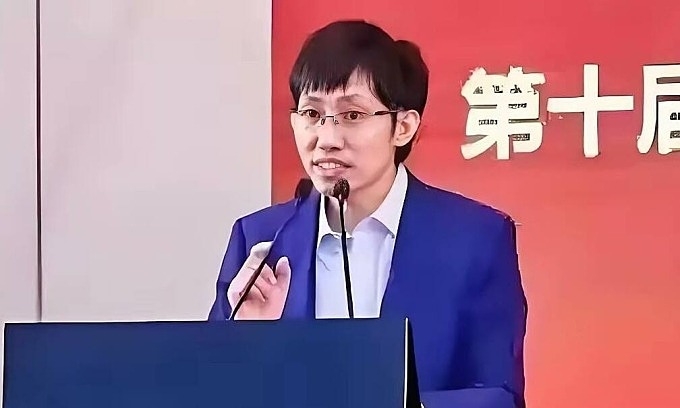Until recently few outside southern Guangdong had heard of Mililing, a quiet rural village with fewer than 700 residents, according to The Times of India.
That changed earlier this year when hundreds of visitors began arriving daily to see the birthplace of Liang, the 40-year-old founder and CEO of DeepSeek, whose breakthroughs in AI have made him both a national icon and a global tech titan.
The once-sleepy village has since transformed. Locals now run drink and souvenir stalls near Liang’s childhood home. “Some visitors take away piles of soil, stones or pieces of leaves,” a resident told the South China Morning Post.
Liang’s rise from gifted student to visionary tech leader has captivated a nation striving to carve out its own future in the global AI race. In January DeepSeek’s release of its R1 reasoning model stunned Silicon Valley and propelled Liang onto the global stage.
Time magazine named him among the “100 Most Influential People of 2025,” noting that Liang’s rise marked a point where “U.S. tech dominance was being openly questioned.”
Born in 1985 to a primary school teacher, Liang grew up in a country still emerging from the constraints of a planned economy. In 2002, at 17, he got the highest score in his region in the national university entrance exam.
He enrolled at Zhejiang University in Hangzhou, an institution known for producing business leaders, where he studied electronics engineering before completing a postgraduate program in machine vision in 2010.
Rather than pursue a corporate career, Liang relocated to Chengdu and began developing algorithms for stock trading, inspired by American hedge fund legend James Simons. Liang later wrote the preface to the Chinese edition of Simons’ biography, expressing confidence that it was possible to build models capable of predicting market prices.
In 2015 he co-founded High-Flyer Quant with university classmate Xu Jin, one of six people he acknowledged in his postgraduate thesis. An early recruitment post from the company hinted at Liang’s accomplishments.

Founder of the AI startup DeepSeek Liang Wenfeng. Photo from Facebook
It described how, in 2008, a “Mr. L” began trading stocks using algorithms with an initial investment of 80,000 yuan (US$11,000) and made over 100 percent annual returns for seven consecutive years, eventually becoming a billionaire.
The fund quickly rose to prominence as one of China’s top four quant trading firms, managing more than 100 billion yuan. In 2021 it invested one billion yuan in building a computing center equipped with 10,000 Nvidia graphics cards, the company said.
As High-Flyer’s computing power began to exceed its trading needs, Liang shifted focus to AI. In 2019 he established an AI lab, and by early 2023, just months after OpenAI launched ChatGPT, he spun the lab into an independent entity named DeepSeek, dedicated to large language model development.
Since then, the startup has released several open-source models, including DeepSeek-V3 and the groundbreaking R1, which have gained rapid traction both in China and abroad. In February, DeepSeek became the most downloaded free app on Apple’s U.S. App Store, according to Time magazine.
“The DeepSeek team is improving their products, while keeping the hype as minimal as possible,” Petri Kuittinen, a lecturer at Häme University of Applied Sciences in Finland, said. Unlike OpenAI’s closed-source approach, DeepSeek’s models are open and cost-effective, offering Chinese companies and institutions a viable domestic alternative.
The company’s valuation ranges widely—from approximately $1 billion to over $150 billion, based on estimates from seven startup founders and AI specialists. Most place its likely worth between $2 billion and $30 billion, which, with Liang owning 84%, would rank him among Asia’s richest tech moguls, according to the Bloomberg Billionaires Index.
Meanwhile, Forbes has recognized Liang as one of the new billionaires in its 2025 ranking, estimating his wealth at $1 billion, driven by his success with DeepSeek and High-Flyer Capital.
Liang’s ascent has pressured global competitors to reassess their strategies.
Kevin Zhou, founder of tech media outlet Pandaily and author of the first Chinese-language biography of OpenAI’s Sam Altman, said Altman is now under increasing pressure to respond. Liang predicted last year that other AI developers would eventually surpass OpenAI, even if it continued to keep its products closed source.
“China can’t always be a follower,” he said in an interview with Chinese media outlet 36Kr in 2024.
Meanwhile, Liang remains focused on pursuing artificial general intelligence (AGI), widely considered the next major milestone in AI. “LLMs possess some preliminary characteristics of AGI and are likely the only path to AGI,” he said. “We’ll start here and work on vision later.”
Despite his meteoric rise, he has stressed that DeepSeek is not driven by short-term financial goals.
“We’re not looking to make a quick profit,” he told Chinese media. “We want to get out in front of the technology and help drive the entire ecosystem forward.”
He also remains highly private. Liang’s only notable public appearance was at a February symposium that Chinese President Xi Jinping chaired along with other tech leaders such as Huawei Technologies founder Ren Zhengfei and Xiaomi founder Lei Jun. He declined an invitation to the AI Action Summit in Paris in the same month and maintains no known social media presence.
Liang has also turned down interviews, meetings with potential investors, and overtures from local officials. His name appears only in research papers published by DeepSeek.
Yet his influence extends well beyond the tech world.
At his former primary school, a poster celebrates Liang’s early achievements, including studying university-level math during middle school.
Teachers now cite him as a model of perseverance, while students across the country reference his story in essay exams as a symbol of dedication, overcoming adversity, and national pride.


1 Comment
ofjfcd